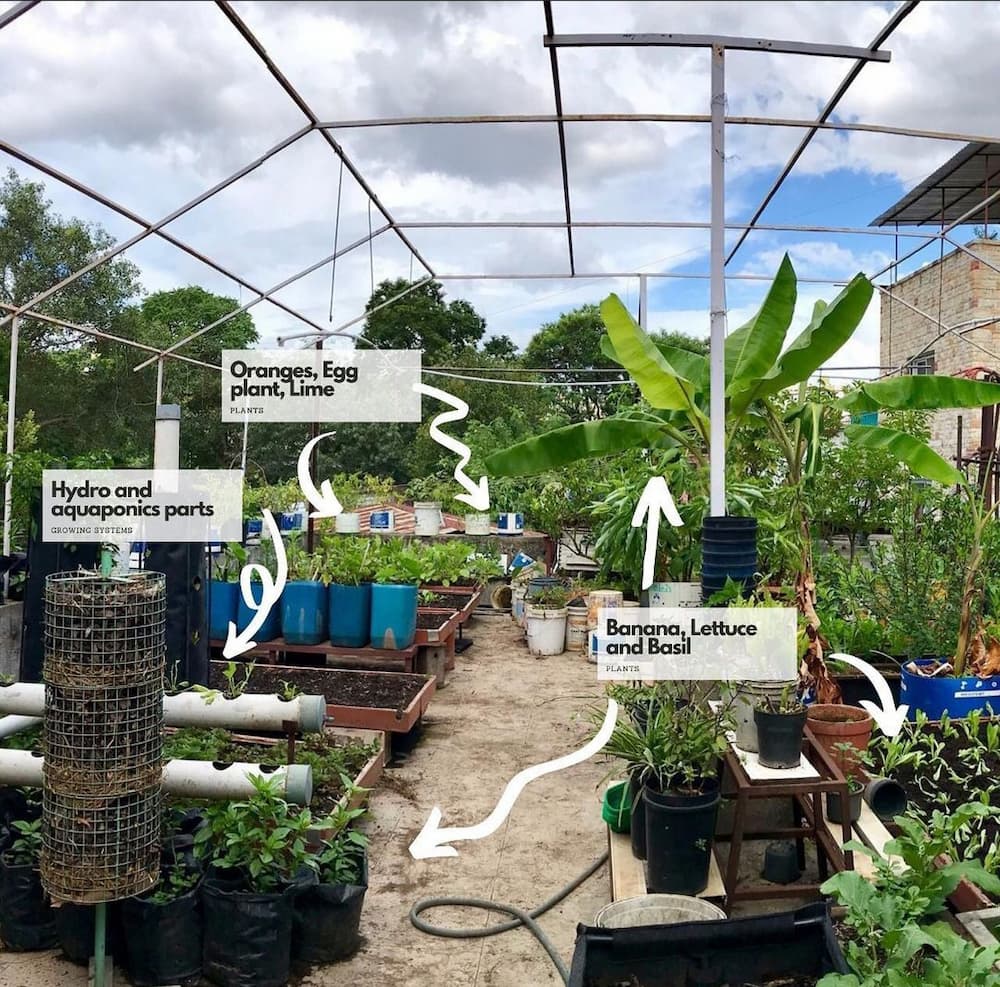Rooftop Farming to Beat the Heat in India
By Chandni Singh, Swarnika Sharma, Sheetal Patil
In dense, tropical cities such as those in India, extreme heat and heatwaves are already a reality and are expected to increase with climate change. While many people talk about ‘nature-based solutions’ such as urban parks and tree-lined roads to reduce the urban heat island effect, we explore whether small patches of urban greenery, such as rooftop farms, balcony gardens, and green backyards, can reduce indoor temperatures and improve the experience of living in increasingly hot cities. This photo essay captures urban farmers’ perceptions of how home gardens are providing a cooling comfort.
Ann Vinya Thomas practices hydroponics on her terrace farm in Bengaluru. She is the founder of HOME, or Heaven on My Earth, where she practices and teaches urban farming. She started farming in 2018.
“ I grew up in Bengaluru. I have seen summer temperatures change from 22–25°C a decade ago, to 38°C now [in 2021]. Most homes have installed ACs, which were unheard of when I was growing up. Since I added a greenhouse on my terrace, temperatures in my house have come down by 5°C in the summer. This has reduced AC charges and my electricity bill is negligible now. Since I get my produce fresh, I don’t need the refrigerator as much. I have an instrument to check the temperature and humidity in my greenhouse so I am sure that I have seen a decrease of 5°C. ”
Sarang Ganoo is an industrial designer. He set up a terrace farm above his uncle’s mechanics workshop in 2015. He notes that rooftop green cover improves working conditions in the workshop
“ Our rooftop farm reduces temperatures directly below it. There are workers who work with a lot of machinery and find that the ambient temperature has improved. ”
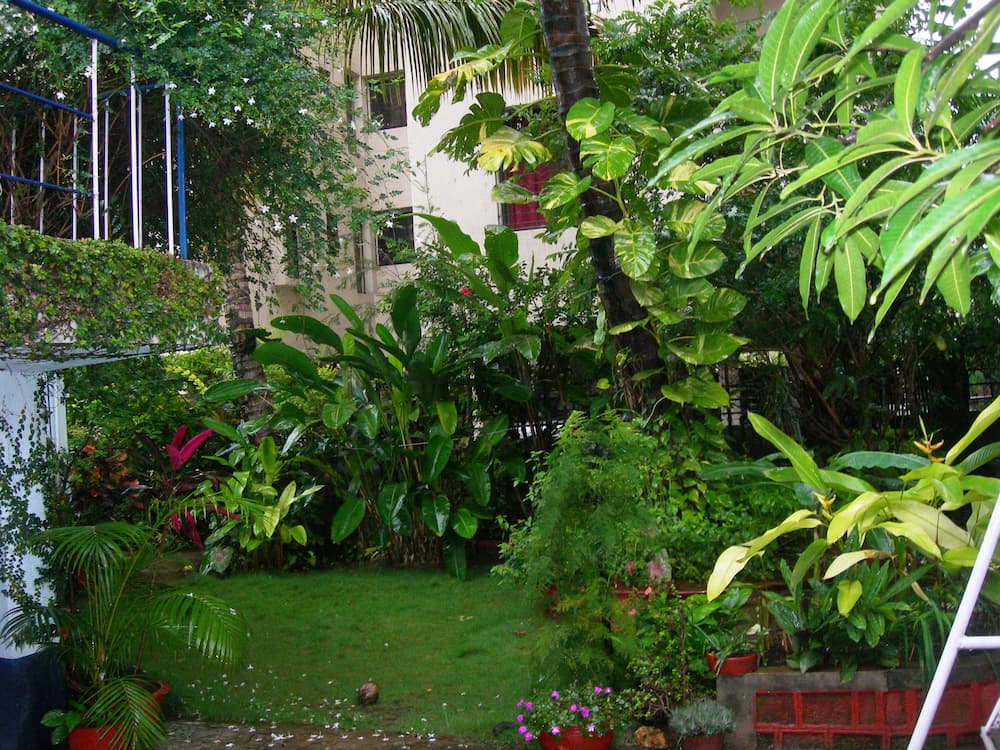
Asha Ugaonkar’s organic kitchen garden
Source : Asha Ugaonkar
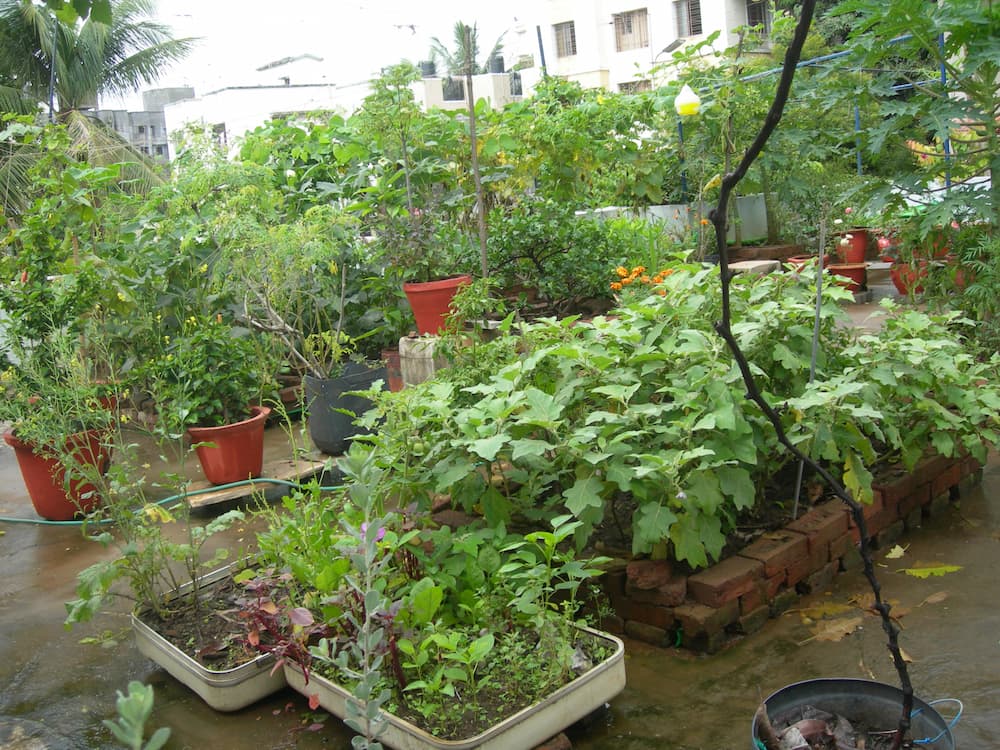
Asha Ugaonkar’s garden
Source : Asha Ugaonkar
Asha Ugaongkar is a well-respected urban farmer in Pune. She has authored a book on organic farming called Sendriya Parasbag (Organic Kitchen Gardens). She has been practicing organic gardening for over 25 years and finds that it cools her home in the ever-warming city.
“ In terms of temperature, there is a 3°C difference when you have a garden on the terrace. I say this based on my own experience as we have a temperature recorder. Our guests also feel the difference. ”
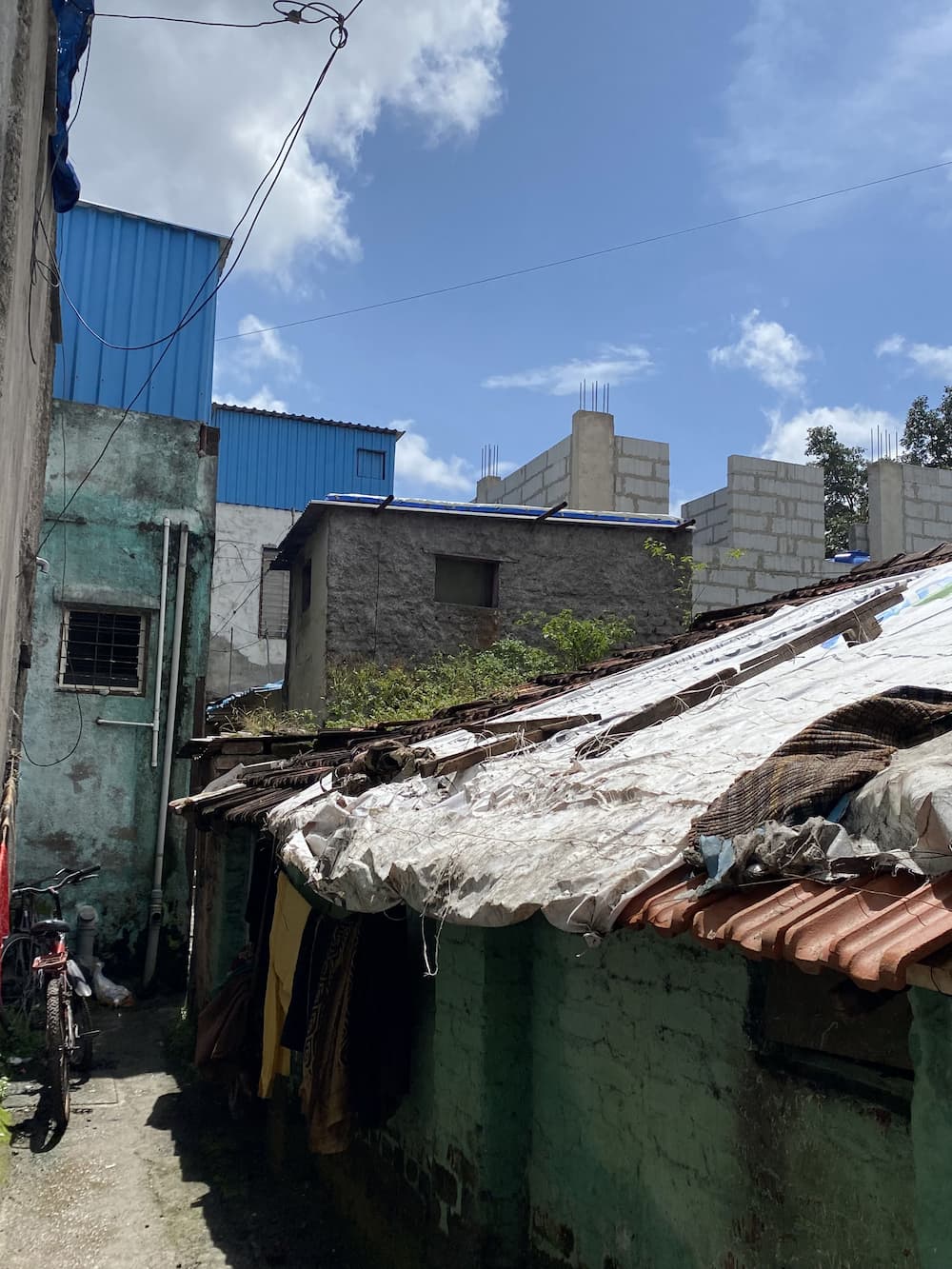
Gardening in Pune’s Low-Income Settlements
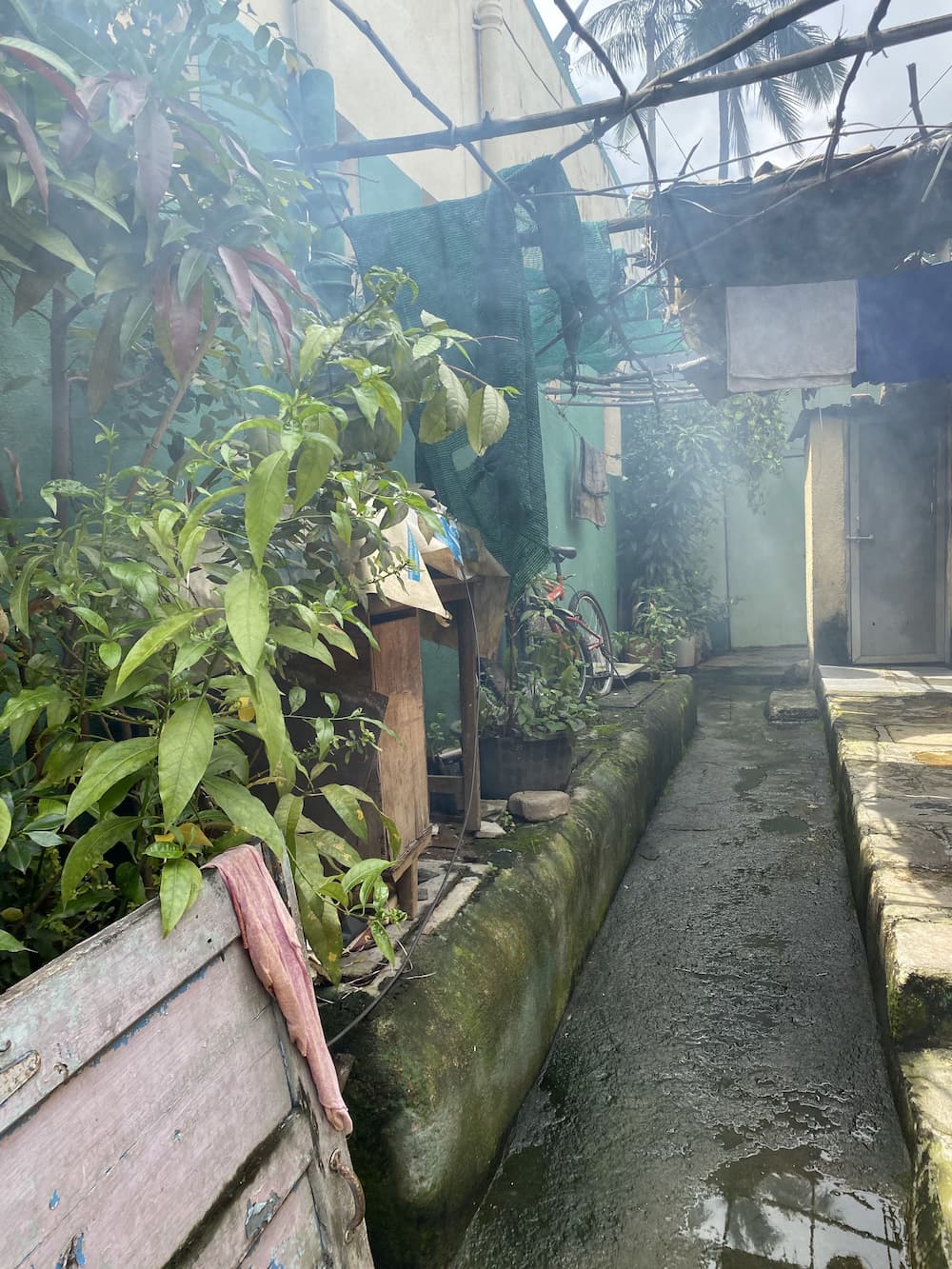
Source: Maitreyi Koduganti Venkata
Low-income settlements in Pune, like in other Indian cities, are densely packed and trap heat. However, many houses grow ornamental plants, herbs and green vegetables, and fruits and flowers.
The garden is set up along the sidewall of the bathroom. Lemon, chillies, and some ornamental plants are growing. This lane is cooler compared to the other lanes we walked in: the plants cut off direct sunlight and create a welcoming shade. Some roofs have weeds and grass growing on them. Sandhya tai explained,
“ Thanda rehta hai, isliye nahin hataate (It keeps the house cool, so we don’t remove it). ”
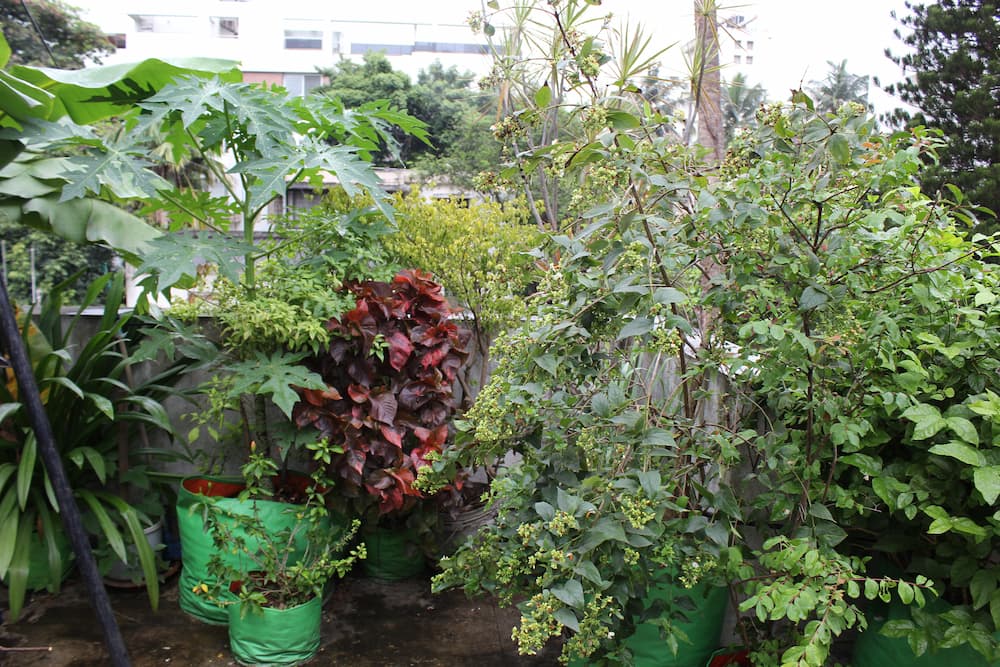
Suchitra and Shirish Diwan’s terrace garden
Source : Swarnika Sharma
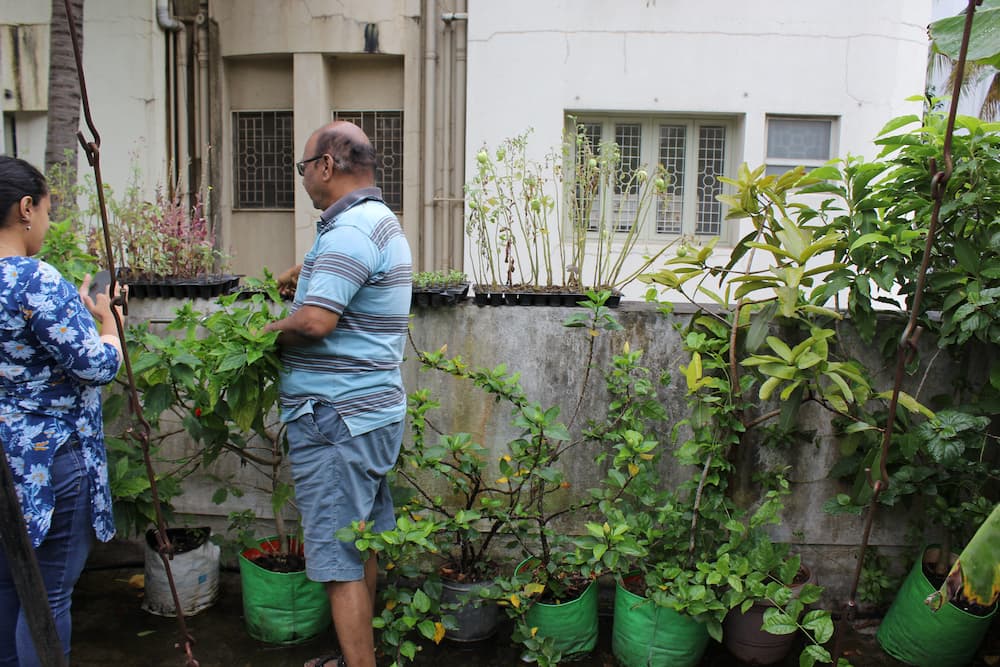
Suchitra and Shirish Diwan’s terrace garden
Source : Swarnika Sharma
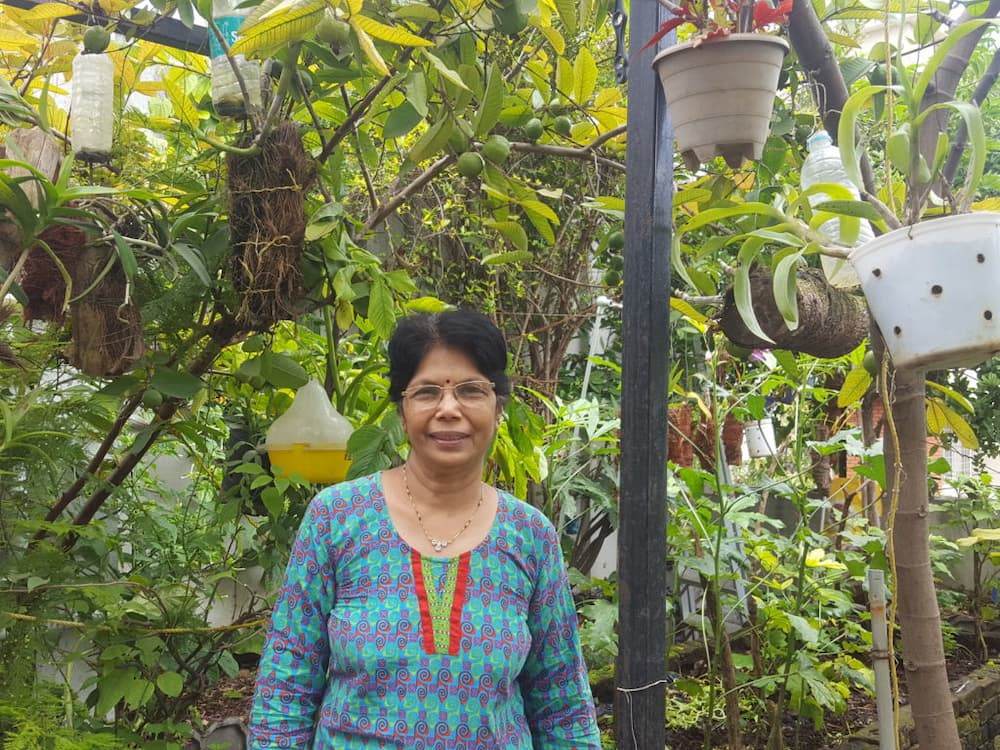
Suchitra Diwan in her terrace garden
Source : Swarnika Sharma
In Pune, Suchitra and Shirish Diwan started their home terrace farm 25 years ago. They took a unique decision to not use any soil, and instead to garden using dry leaves and kitchen waste only. Their terrace is a haven for birds, bees, and butterflies. The lush, biodiverse space has significantly regulated indoor heat. They explain,
“ Earlier, when the garden was very small, sitting in this room [immediately under the terrace] without a fan was very difficult in May. An M.Arch student studied the difference in morning, mid-afternoon, and evening temperatures among flats with terrace gardens and those without. She found a difference of 5–7°C. ”
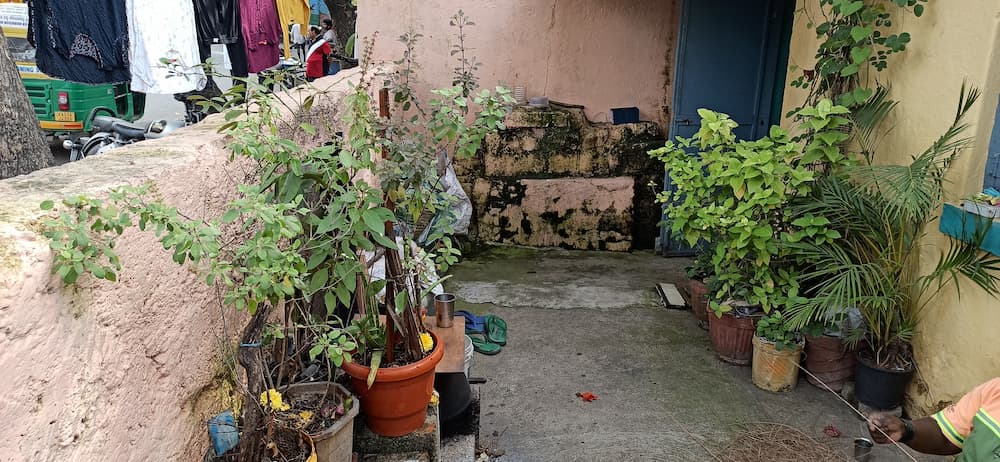
Garden in the verandah of a low-income household in Guttahalli, Bengaluru, India
Source: Swarnika Sharma
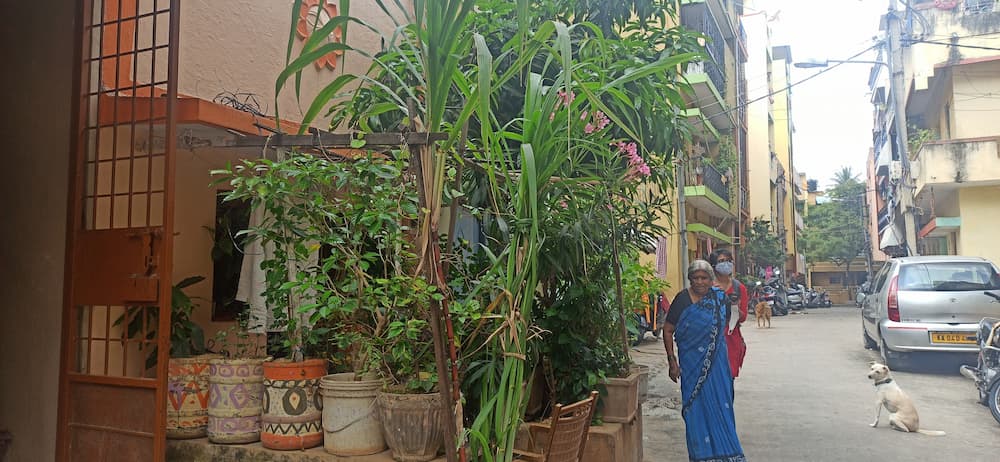
Lush green garden of a low-income resident in MD Block, Bengaluru, India.
Source: Swarnika Sharma
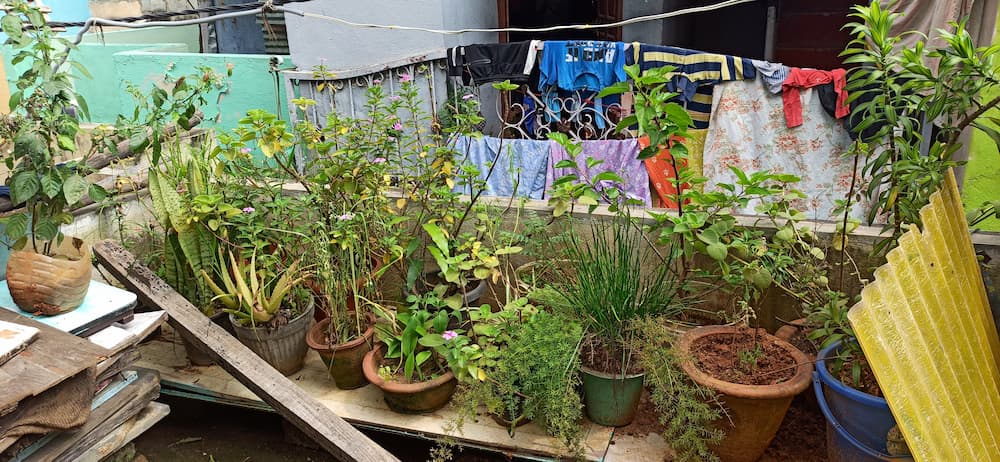
A terrace garden of a low-income household in Pottery Town, Bengaluru, India
Source: Swarnika Sharma
Residents of low-income settlements in Guttahalli, MD block - Malleshwaram, and Pottery Town areas of Bengaluru grow herbs for cooking and plants for greenery and cooling benefits in and around their homes. The residents observed,
“ The air is very cool here. I need to see these plants as soon as I get up. I come every morning to see them[...] because of the plants, it is very pleasant and cool here, and we sit here most of the time. ”
“ It is definitely cooler here in the summertime. Rainy season is a little challenging for us because of the mosquitoes. We know that the plants attract mosquitoes, but they keep the place cool and are nice to see, so we keep them. ”
Conclusion
Having green cover and farms on rooftops, in backyards, and on balconies reduces perceived heat and improves liveability. In a companion study in Chennai, Ashwin Mahalingam and others found that urban farming can reduce temperatures by approximately 0.7°C from 2017 to 2041. While the heat reduction benefits of urban agriculture are hyperlocal and currently based on people’s perceptions, if scaled up across urban rooftops, the benefits can potentially increase. India's Homeowner’s Handbook on Cool Roofs does not mention rooftop farms or gardens, but as extreme heat becomes common in Indian cities, we need to explore all solutions to make cities more liveable.
Further reading:
Quantifying the long-term environmental impacts of urban and peri-urban agriculture, a blog by Ashwin Mahalingam, U Srilok Sagar, Yatharth Singh, and Teja Malladi.

